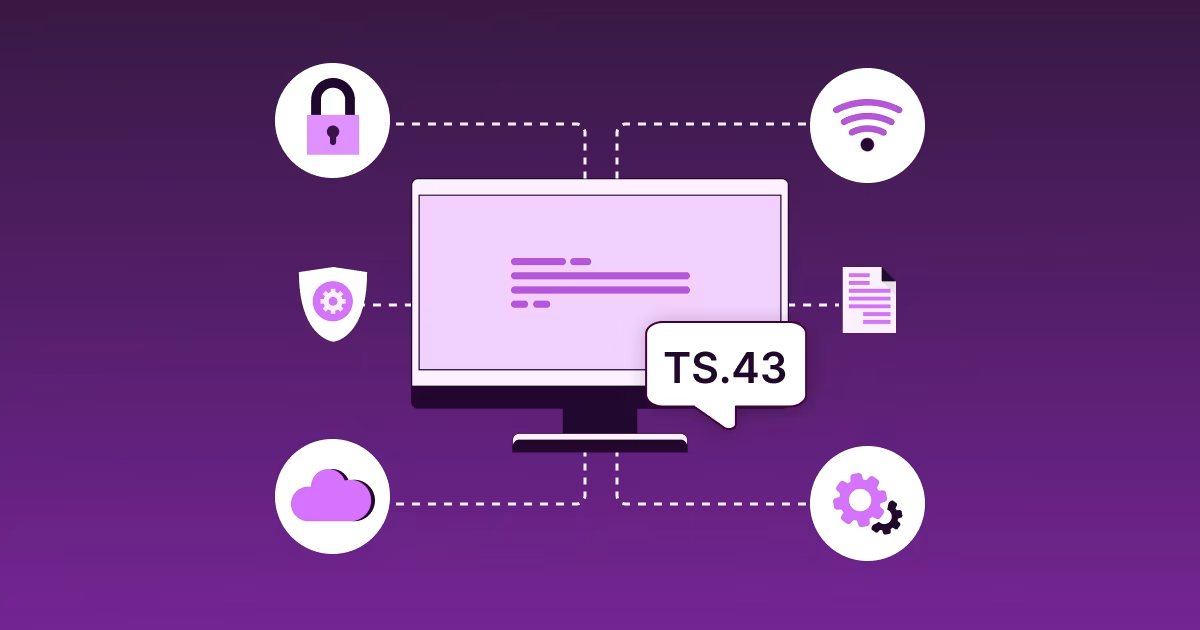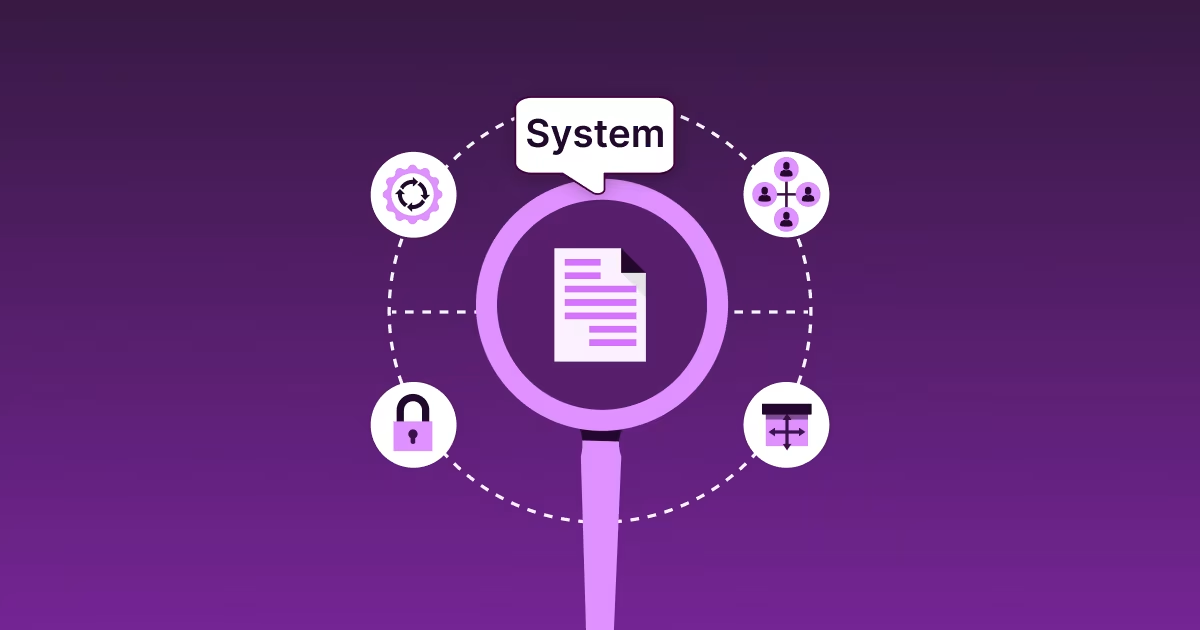How TS.43 Relates to Other GSMA/3GPP Specs: RCC.14, IR.51, IR.92

Key Takeways
- S.43 manages entitlement; IR.51 and IR.92 manage configuration.
- RCC.14 is the protocol that connects device and server for entitlement messages.
- All four specs must align for consistent service activation.
- Operators and OEMs should validate TS.43 and RCC.14 compatibility early.
- Understanding these relationships reduces integration time and certification friction.
If you’ve started working on an entitlement server project, one question probably came up quickly: how does TS.43 actually relate to other telecom standards like RCC.14, IR.51, and IR.92?
At first glance, these specifications might look like they overlap, but in practice, each serves a different purpose in the telecom ecosystem. Understanding how they connect is critical when designing or implementing a TS.43-compliant entitlement server.
In this guide, let’s break down the relationship between these specifications in plain terms so you can make clear, well-informed decisions about your architecture.
If you’re still new to entitlement servers, start with our primer What is an Entitlement Server & Why It Matters for Telecom Operators. That will help you understand where TS.43 fits before diving into how it interacts with the other GSMA and 3GPP standards.
The Core Purpose of TS.43
TS.43 is a GSMA specification that defines how a device communicates with an entitlement server to verify if a user or subscription is eligible to use services like VoLTE, VoWiFi, SMS over IP, or eSIM activation.
It’s about entitlement — confirming that both the subscriber and the network are authorized to use a specific service. TS.43 doesn’t define the voice service itself, the IMS profile, or the provisioning details. It simply acts as the control gate that allows or blocks service access based on eligibility.
If you want to understand how TS.43 fits into deployment strategy and design, explore our post How to Implement an Entitlement Server, which covers technical and operational best practices.
The Other Three Specs in Context
To understand how TS.43 connects with other standards, let’s quickly define what each one does.
These three work together to ensure that devices can be configured, connected, and authorized to use IMS-based services such as VoLTE and VoWiFi. TS.43 builds on top of them to manage entitlement validation and activation.
TS.43 and RCC.14: Message Meets Transport
TS.43 defines the entitlement logic. RCC.14 defines how that logic travels between the device and the entitlement server.
You can think of RCC.14 as the transport mechanism for TS.43. It sets out the interface and message structure so that the entitlement server can securely exchange entitlement documents, authentication tokens, and configuration details with the device.
Without RCC.14, the TS.43 flows wouldn’t have a standardized communication path. RCC.14 ensures that both sides (device and network) speak the same technical language.
For operators and OEMs, ensuring RCC.14 compliance is essential. Without it, devices might not complete entitlement verification properly or could fail to activate services such as VoWiFi or eSIM.
TS.43, IR.51, and IR.92: The Service Configuration Layer
IR.51 and IR.92 existed long before TS.43. They describe how services like VoWiFi and VoLTE are configured and what technical parameters a device must support to access IMS networks.
In short:
- IR.51 handles Wi-Fi calling configurations, including IMS profiles, emergency service behavior, and device setup.
- IR.92 handles IMS voice and SMS over LTE service definitions.
These specifications focus on how the service operates once it’s active. TS.43 steps in before that point to determine if the subscriber and network are entitled to enable that service.
In many ways, IR.51 and IR.92 provide the “service manual,” while TS.43 acts as the “eligibility check.” They complement each other but do not overlap.
If you’re exploring where provisioning and entitlement differ, check out our post Entitlement Server vs Authorization Server vs Provisioning Server: What’s the Difference?. It clearly distinguishes these roles in telecom architecture.
How They Work Together in the Real World
Here’s how the flow usually works in practice:
- IR.92 and IR.51 define the configuration parameters for VoLTE or VoWiFi services.
- The device retrieves or stores those configurations as part of initial provisioning.
- The entitlement client on the device then initiates a TS.43 entitlement check using the RCC.14 protocol.
- The entitlement server verifies if the subscriber is allowed to activate that service and, if approved, sends back the configuration to the device.
So, IR.51 and IR.92 establish the “what” of the service, RCC.14 handles the “how” of communication, and TS.43 governs the “who” — who is entitled to activate and use it.
This three-layer relationship makes sure that only valid, authorized users get access to high-value services, which reduces fraud and ensures regulatory compliance.
Common Misunderstandings Among Teams
Even experienced telecom professionals sometimes blur the lines between these specs. Here are the top three misconceptions we see:
1. “IR.51 or IR.92 already handle entitlement.”
They don’t. They define configuration and service parameters, not entitlement logic.
2. “TS.43 can operate standalone.”
It relies on RCC.14 for communication and on IR.51/IR.92 for service context. Without those, entitlement messages won’t align with the expected configuration.
3. “RCC.14 is an alternative to TS.43.”
It’s not. RCC.14 is the transport mechanism underneath TS.43. Think of it as the highway that carries TS.43 traffic.
Addressing these misunderstandings early helps teams avoid integration delays and device certification issues.
Implications for Operators and OEMs
Understanding how these standards interact is not just a compliance exercise, it affects product rollout, user experience, and interoperability.
- For operators: verify that your entitlement server supports RCC.14 interfaces and correctly references IR.51 and IR.92 parameters. This ensures seamless device activation.
- For OEMs: align the device entitlement client with operator-specific TS.43 versions and transport mechanisms. Compatibility with RCC.14 is non-negotiable.
- For multi-market rollouts: maintain alignment across all four specs to avoid inconsistent entitlement behavior in different regions.
Our TS.43 Entitlement Server Deployment Guide for Carriers & OEMs outlines how to verify version compatibility and readiness across your ecosystem.
A Simple Example: Wi-Fi Calling Activation
Let’s say a user enables Wi-Fi calling on their phone.
- The device uses IR.51 to configure its IMS settings for VoWiFi.
- Using RCC.14, it contacts the entitlement server.
- TS.43 verifies if the subscriber’s plan and network support VoWiFi.
- If approved, the device enables the feature.
If any part of that chain fails eg: outdated IR.51 parameters, unsupported RCC.14 flow, or misaligned TS.43 version, the service won’t activate. That’s why alignment between all these standards is critical.
You can read more examples of how entitlement works in specific scenarios like wearables, eSIM, and silent authentication in our post Use Cases of Entitlement Servers: Wearables, eSIM, VoWiFi, and Silent Authentication.
Conclusion: Clarity Builds Better Architecture
TS.43 does not operate in isolation. It’s part of a layered standards stack that ensures service activation is secure, compliant, and consistent across devices and networks.
For decision-makers, the takeaway is simple: when you plan your entitlement server architecture, account for RCC.14, IR.51, and IR.92 right from the start. Doing so will help you avoid deployment friction and ensure smoother OEM integrations.
If you’re designing or upgrading your entitlement server and want to ensure compliance across these specifications, connect with our team. We help carriers and OEMs align their TS.43 implementations with the broader GSMA framework for seamless, future-ready operations.
FAQs
What is the difference between TS.43 and IR.51?
TS.43 handles entitlement—verifying that a subscriber and network can use a service—while IR.51 defines device/IMS configurations for services like VoWiFi. They serve distinct roles.
Can TS.43 work without IR.51, IR.92 or RCC.14?
Not effectively. While TS.43 is about entitlement logic, it relies on configuration (IR.51/IR.92) and transport (RCC.14). If any link is missing you face activation issues.
Does TS.43 replace IR.51 or IR.92?
No. TS.43 does not replace those specifications. It complements them by adding the entitlement check layer. IR.51/IR.92 handle configuration and service parameters; TS.43 ensures device and user are allowed to use them.





.png)


